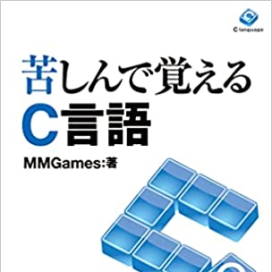
Read it right next to your computer.
Book version bitter C
student data[10];data[1].year = 3;
strcpy(data[1].name, "MARIO");You can treat the received function just like the array arguments it replaces.
void student_print(student data[], int count)
{
int i;
for (i = 0; i < count; i++)
{
printf("[学Year]:%d\n", data[i].year);
printf("[クラス]:%d\n", data[i].clas);
printf("[出席番号]:%d\n", data[i].number);
printf("[名前]:%s\n", data[i].name);
printf("[身長]:%f\n", data[i].stature);
printf("[体重]:%f\n", data[i].weight);
}
return;
}
Learning C language through suffering (Kushi C) is
This is the definitive introduction to the C language.
It systematically explains the basic functions of the C language.
The quality is equal to or higher than commercially available books.